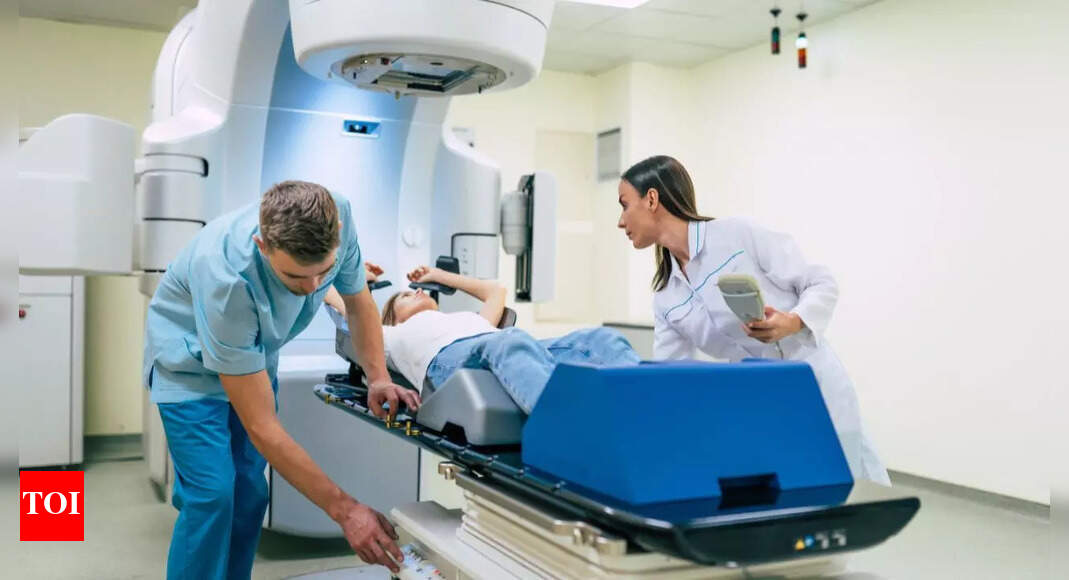Can women get prostate cancer? Understanding the ‘female prostate’, its function, and the rare risk of Skene’s gland tumours | – Times of India

Most people learn in biology class that the prostate is unique to men. Yet human anatomy holds a small surprise: at the front wall of the vagina sits a pair of glands, the Skene’s glands, that share many features with the male prostate. They contain the same enzymes (prostate-specific antigen and PSA phosphatase), may swell or become infected, and in exceptional cases can turn cancerous. According to Medical News Today, a 2017 literature review put the lifetime risk of true ‘female prostate cancer’ at a fraction of one percent of all genitourinary cancers in women. Still, because symptoms mimic more common problems such as cysts or recurrent urinary-tract infections, early tumours can be missed. Knowing what the female prostate does, how cancer might develop, and when to seek testing helps demystify a condition that—while rare—deserves a place on every clinician’s diagnostic radar.
What does the female prostate (Skene’s glands) actually do
Researchers using MRI and 3-D ultrasound have mapped these pea-sized glands around the urethra. The Skene’s tissue produces a thin, alkaline fluid high in PSA—the same marker doctors track in men. Studies suggest this fluid may help protect the urinary tract from infection, contribute to arousal lubrication, and explain the G-spot’s sensitivity. In people with polycystic ovary syndrome (PCOS) the glands are often enlarged, hinting that hormonal shifts influence their growth.
How common is female prostate cancer
According to Medical News Today, a 1994 database review found that Skene’s gland tumours made up roughly 0.003 % of all documented cancers of the female urinary or genital tract—fewer than one case per 30 million women. Later reports confirm its rarity but caution that some urethral or vaginal cancers may originate in Skene’s tissue and be mislabeled. Because awareness is low, pathologists now stain suspicious biopsies for PSA to avoid missed diagnoses.Female prostate cancer symptoms that overlap with more common conditions
- Palpable mass or firm lump near the vaginal opening
- Pain or burning during sex or urination
- Recurrent UTIs that resist standard antibiotics
- Unusual discharge sometimes streaked with blood
These signs also occur with Skene’s cysts, abscesses, or simple urethritis, which is why persistent symptoms after routine treatment should prompt imaging or referral to a uro-gynaecologist.
Female prostate cancer diagnosis relies on PSA staining and imaging
Pelvic MRI can reveal a solid lesion within the gland, but definitive diagnosis comes from a biopsy stained for PSA or PSAP. Elevated serum PSA has been reported in case studies, yet most clinicians use it only to monitor confirmed tumours, not to screen healthy women—the false-positive rate would be too high.Treatment mirrors protocols for other glandular cancersBecause data are sparse, doctors adapt guidelines from urethral and prostate oncology:
- Surgical excision with clear margins is the primary approach for localised disease.
- Radiation or platinum-based chemotherapy may follow for aggressive histology or regional spread.
- Long-term outcomes are hard to predict, but individual case reports describe disease-free intervals of five years or more with early surgery.
Female prostate cancer Related FAQs
- Do all women have a female prostate?
Yes. The Skene’s glands are part of typical female anatomy, though size varies from barely visible to several millimetres.
- Can a standard PSA blood test detect Skene’s gland cancer early?
Not reliably. PSA can rise from infection, cysts, or breast cancer; routine screening would create more confusion than benefit. It is mainly used to monitor known tumours.
- Are Skene’s cysts precancerous?
No. Cysts result from blocked ducts and carry no proven link to malignancy, but chronic inflammation may mask an underlying tumour, so persistent or recurrent cysts should be biopsied.
- Does PCOS increase the risk of female prostate cancer?
Current studies show larger Skene’s glands in PCOS, yet no direct rise in cancer incidence. Research is ongoing.
- What specialist treats Skene’s gland disorders?
Uro-gynaecologists and urologists with female pelvic-floor training typically manage diagnosis and surgery for Skene’s conditions.
var _mfq = window._mfq || [];
_mfq.push([“setVariable”, “toi_titan”, window.location.href]);
!(function(f, b, e, v, n, t, s) {
function loadFBEvents(isFBCampaignActive) {
if (!isFBCampaignActive) {
return;
}
(function(f, b, e, v, n, t, s) {
if (f.fbq) return;
n = f.fbq = function() {
n.callMethod ? n.callMethod(…arguments) : n.queue.push(arguments);
};
if (!f._fbq) f._fbq = n;
n.push = n;
n.loaded = !0;
n.version = ‘2.0’;
n.queue = [];
t = b.createElement(e);
t.async = !0;
t.defer = !0;
t.src = v;
s = b.getElementsByTagName(e)[0];
s.parentNode.insertBefore(t, s);
})(f, b, e, ‘https://connect.facebook.net/en_US/fbevents.js’, n, t, s);
fbq(‘init’, ‘593671331875494’);
fbq(‘track’, ‘PageView’);
};
function loadGtagEvents(isGoogleCampaignActive) {
if (!isGoogleCampaignActive) {
return;
}
var id = document.getElementById(‘toi-plus-google-campaign’);
if (id) {
return;
}
(function(f, b, e, v, n, t, s) {
t = b.createElement(e);
t.async = !0;
t.defer = !0;
t.src = v;
t.id = ‘toi-plus-google-campaign’;
s = b.getElementsByTagName(e)[0];
s.parentNode.insertBefore(t, s);
})(f, b, e, ‘https://www.googletagmanager.com/gtag/js?id=AW-877820074’, n, t, s);
};
function loadSurvicateJs(allowedSurvicateSections = []){
const section = window.location.pathname.split(‘/’)[1]
const isHomePageAllowed = window.location.pathname === ‘/’ && allowedSurvicateSections.includes(‘homepage’)
const ifAllowedOnAllPages = allowedSurvicateSections && allowedSurvicateSections.includes(‘all’);
if(allowedSurvicateSections.includes(section) || isHomePageAllowed || ifAllowedOnAllPages){
(function(w) {
function setAttributes() {
var prime_user_status = window.isPrime ? ‘paid’ : ‘free’ ;
var geoLocation = window?.geoinfo?.CountryCode ? window?.geoinfo?.CountryCode : ‘IN’ ;
w._sva.setVisitorTraits({
toi_user_subscription_status : prime_user_status,
toi_user_geolocation : geoLocation
});
}
if (w._sva && w._sva.setVisitorTraits) {
setAttributes();
} else {
w.addEventListener(“SurvicateReady”, setAttributes);
}
var s = document.createElement(‘script’);
s.src=”https://survey.survicate.com/workspaces/0be6ae9845d14a7c8ff08a7a00bd9b21/web_surveys.js”;
s.async = true;
var e = document.getElementsByTagName(‘script’)[0];
e.parentNode.insertBefore(s, e);
})(window);
}
}
window.TimesApps = window.TimesApps || {};
var TimesApps = window.TimesApps;
TimesApps.toiPlusEvents = function(config) {
var isConfigAvailable = “toiplus_site_settings” in f && “isFBCampaignActive” in f.toiplus_site_settings && “isGoogleCampaignActive” in f.toiplus_site_settings;
var isPrimeUser = window.isPrime;
var isPrimeUserLayout = window.isPrimeUserLayout;
if (isConfigAvailable && !isPrimeUser) {
loadGtagEvents(f.toiplus_site_settings.isGoogleCampaignActive);
loadFBEvents(f.toiplus_site_settings.isFBCampaignActive);
loadSurvicateJs(f.toiplus_site_settings.allowedSurvicateSections);
} else {
var JarvisUrl=”https://jarvis.indiatimes.com/v1/feeds/toi_plus/site_settings/643526e21443833f0c454615?db_env=published”;
window.getFromClient(JarvisUrl, function(config){
if (config) {
const allowedSectionSuricate = (isPrimeUserLayout) ? config?.allowedSurvicatePrimeSections : config?.allowedSurvicateSections
loadGtagEvents(config?.isGoogleCampaignActive);
loadFBEvents(config?.isFBCampaignActive);
loadSurvicateJs(allowedSectionSuricate);
}
})
}
};
})(
window,
document,
‘script’,
);
[title_words_as_hashtags




